(First upload on December 25 2008. Last on July 1 2021) [ 日本語 | English ]
Mount Usu / Sarobetsu post-mined peatland
From left: Crater basin in 1986 and 2006. Cottongrass / Daylily
HOME > Plant list (植物リスト) > Apiaceae (Umbelliferae) (セリ科) > Daucus carota
Daucus L. (ニンジン)Noraninjin (ノラニンジン, 野良人参), Anne's lace (US) / wild carrot (UK)Lifeform: (plastic) biennial forb < 2 m in height Distribution: native to temperate regions (Europe - southwest Asia - northeast North America), but exotic to Japan Hokkaido Blue List 2010: A3 Habitat: shrubs, grasslands, and waste lands including roadsides→ Nature on lakes, volcanoes, sea and forests (海と湖と火山と森林の自然) |
HUSTEP: Plants and Plant communities in Japan (flora list) Pollination: insectsFlower color: white - pink Carrot we eat: that is a caltivar. ssp. sativus (Hoffm.) Arcang. → famous to use callus culture experiments |
|
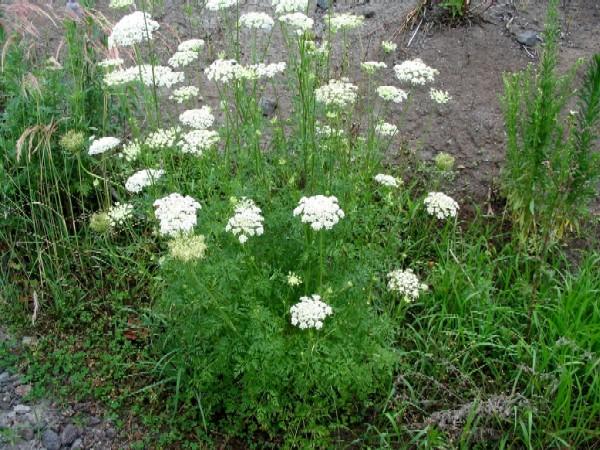 1
1
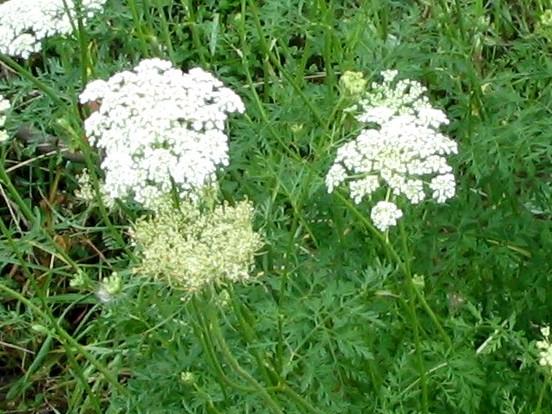 2
2
 3
3
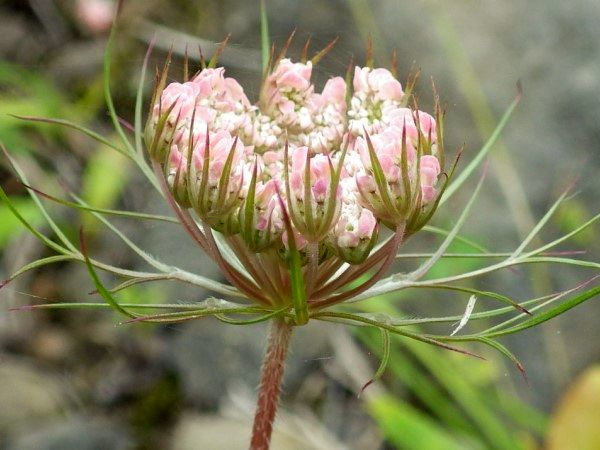 4
4
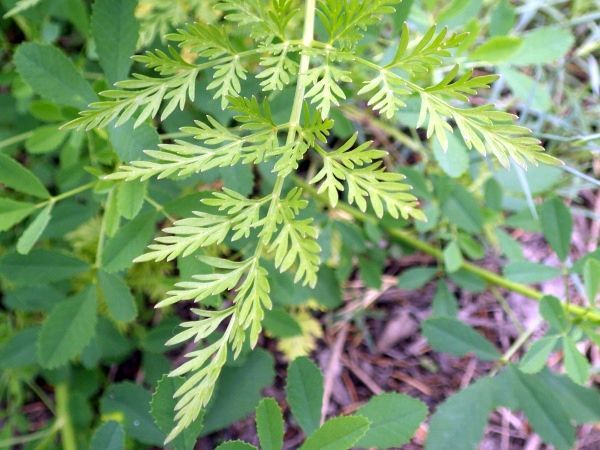 5
5
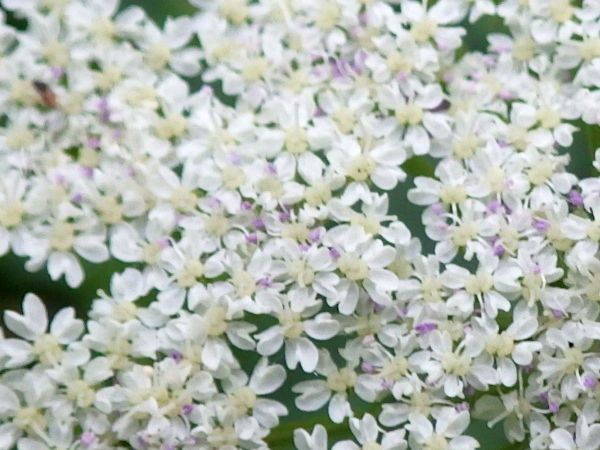 6
6
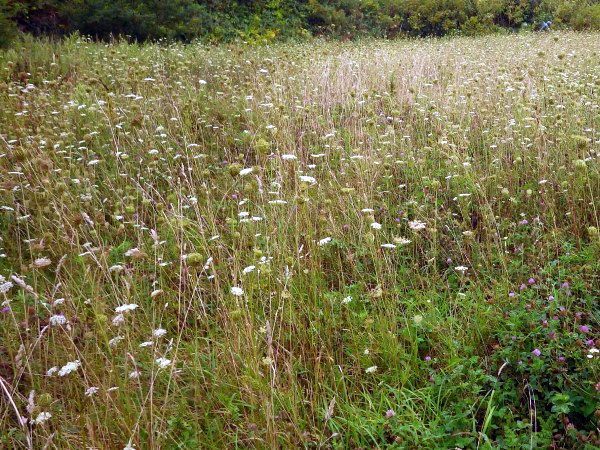 7
7
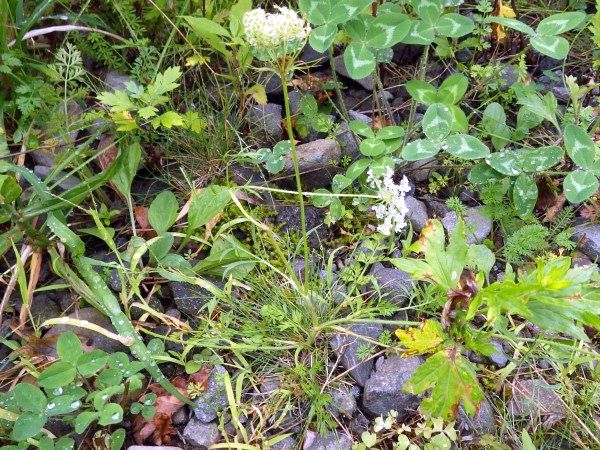 8
8
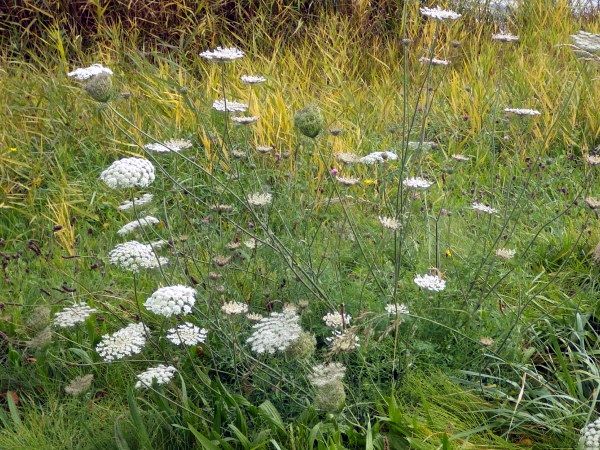 9
9
[1/2] near the Kompira craters created by the 2000 eruptions of Mount Usu on July 20, 2005. [3] on a sandbar near Kariki Bridge along Toyohira River, Sapporo, on June 21 2021. [4] along Kompira-yama trail between the K-1 Crater and the ruins of apartments on August 14 2019. [5/6] in the campus of Northeast Normal University in Changchun, northeastern China, on June 10 2017. [7] in a grassland super-dominated by wild carrot near the Muroran Marine Experimental Station of Hokkaido University September 3 2018. [8] along the formerly Shiretoko Forest Road in eastern Hokkaido on August 29 2020. [9] along Tonneusu Pond (トンネウス沼) in the North Ward of Sapporo on November 7 2020. Records: pink flowers along Kompira-yama trail between the K-1 Crater and the ruins of apartments on July 26 2013. Around the accomodation of Hokkaido University Teshio Experimental Forest, northern Hokkaido, on August 30 2021. in the forecourt of Usujiri Fisheries Station of Hokkaido University, southern Hokkaido, on June 20 2025.
Murashige-Skoog culture mediumMurashige Toshio (村重敏夫), 1930-Skoog, Folke Karl, 1908-2001 1962 estabilshed MSX: X = the sucrose concentration of the medium Ex. MS0 = no sucrose. MS20 = 20 g/L sucrose IngredientsMajor salts (macronutrients)/lAmmonium nitrate (NH4NO3) … 1650 mg/l Calcium chloride (CaCl2·2H2O) … 440 mg/l Magnesium sulfate (MgSO4·7H2O) … 180.7 mg/l Monopotassium phosphate (KH2PO4) … 170 mg/l Potassium nitrate (KNO3) … 1900 mg/l Minor salts (micronutrients)/l Boric acid (H3BO3) … 6.2 mg/l Cobalt chloride (CoCl2·6H2O) … 0.025 mg/l Ferrous sulfate (FeSO4·7H2O) … 27.8 mg/l Manganese(II) sulfate (MnSO4·4H2O) … 22.3 mg/l Potassium iodide (KI) … 0.83 mg/l Sodium molybdate (Na2MoO4·2H2O) … 0.25 mg/l Zinc sulfate (ZnSO4·7H2O) … 8.6 mg/l Ethylenediaminetetraacetic acid ferric sodium (FeNaEDTA) … 36.7 mg/L Copper sulfate (CuSO4·5H2O) … 0.025 mg/l Vitamins and organic compounds/l Myo-Inositol … 100 mg/l Nicotinic acid … 0.5 mg/l Pyridoxine · HCl … 0.5 mg/l Thiamine · HCl … 0.1 mg/l Glycine … 2 mg/l Tryptone … 1 g/l (optional) Indole acetic acid … 1-30 mg/l (optional) Kinetin … 0.04-10 mg/l (optional) |
Stock solutionSol I. (× 50): 40 ml (NH4NO3, KNO3, KH2PO4, H3BO3, MnSO4·H2O, ZnSO4·H2O, KI, Na2MoO4·2H2O, CuSO4·5H2O)Sol II. (× 100): 20 ml (CaCl2·2H2O) Sol III (× 100): 20 ml (MgSO4·7H2O) Sol IV (× 100): 20 ml (Na2-EDTA, FeSO4·7H2O) Sol V (× 200 mixture or separately preparation 100 mg/ml myoinositol (× 1000): 2.0 ml 1 mg/ml nicotinic acid (× 2000): 1.0 ml 1 mg/ml pyridoxin-HCl (× 2000): 1.0 ml 0.5 mg/ml thiamin-HCl (× 5000): 0.4 ml 4 mg/ml glycine (× 2000): 1.0 ml Experimental design of tissue culture
6-BA A (0 mg/l) B (0.02) C (0.2) D (2.0)
2, 4-D
0 (0 mol) A0 B0 C0 D0
7 (10-7) A7 B7 C7 D7
6 (10-6) A6 B6 C6 D6
5 (10-5) A5 B5 C5 D5
Results
Week A0 B0 C0 D0 A7 B7 C7 D7 A6 B6 C6 D6 A5 B5 C5 D5
1 - - - - 1 3 3 2 2 2 2 2 - 1 2 2
2 - - - - 2 4 4 2 3 2 2 2 1 2 3 3
3 - - - - 3 4 4 3 4 2 2 2 2 2 3 3
4 - - - - 3 4 4 3 4 3 3 2 2 2 3 3
5 - - - 1 3 4 4 3 4 4 4 3 2 2 4 3
-: disk remained. 1, 2, 3, 4: degrees of cullus formation
|